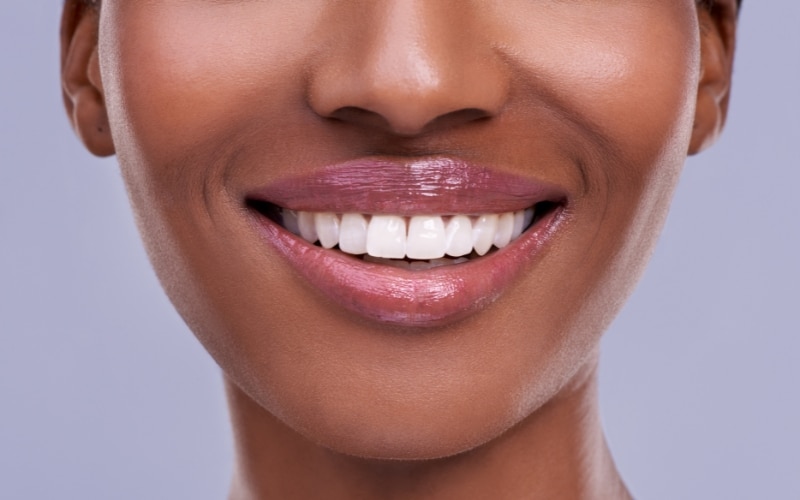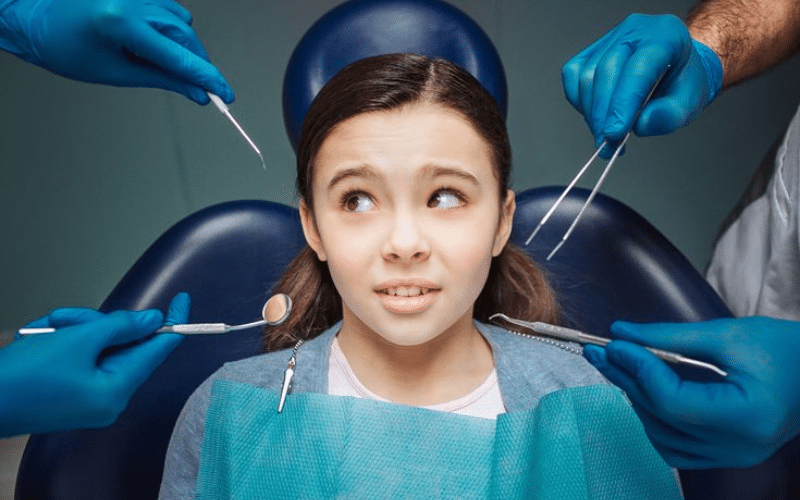
Greater exposure of the tooth or its root occurs when the gum line surrounding teeth recedes. This is called a “gum recession.” If therapy for this sickness is not administered, symptoms may include insensitivity, discomfort, and possibly even tooth loss.
Several factors contribute to receding gums, including gum disease, genetic predisposition, and aggressive brushing techniques. Cosmetic dentistry, while primarily focused on enhancing the appearance of your smile, also addresses gum issues.
By combining aesthetic improvements with functional treatments, this option offers solutions to manage and improve receding gums, helping restore both gum health and the overall appearance of your smile.
Understanding Receding Gums
Receding gums are characterized by the gradual shrinking of gum tissue, which exposes more of the tooth and its root. Increased sensitivity to hot, cold, or sweet meals may result from this. Identifying receding gums involves looking for signs like tooth sensitivity, longer-looking teeth, and visible gaps between the teeth and gums.
Several factors contribute to gum recession. Gum disease, caused by bacterial infection, destroys gum tissue and bone, leading to recession. Genetics also play a role; some individuals are naturally prone to gum issues.
Furthermore, using a toothbrush with harsh bristles or brushing too firmly are two bad brushing habits that might exacerbate gum recession. Hormonal changes, smoking, and teeth grinding are other risk factors that can exacerbate the problem.
Cosmetic Dentistry Overview
The goal of cosmetic dentistry is to make your teeth, gums, and smile seem better. It includes a range of operations like bonding, veneers, crowns, and whitening that are intended to improve the looks of teeth. While it primarily targets visual aspects, many procedures also address functional issues.
Popular cosmetic procedures include teeth whitening, which brightens discolored teeth; veneers, which cover imperfections; and crowns, which restore damaged teeth.
Although this dentistry is often associated with aesthetic improvements, some treatments also have practical benefits, like improving the alignment and health of the gums. This dual focus makes it a viable option for those seeking to address receding gums while enhancing their smile.
Cosmetic Dentistry Solutions for Receding Gums
Gum Grafting:
Gum grafting is a well-established procedure designed to address receding gums. Using this surgical approach, tissue from a donor site—typically the palate—is transplanted onto the parts of your mouth where your gums have receded. Covering exposed tooth roots and repositioning the gum line to a healthier posture are the objectives.
This procedure helps protect the exposed roots and reduces tooth sensitivity and improves the overall appearance of your gums. By providing a protective layer of tissue, gum grafting can prevent further gum recession and related complications, such as tooth decay and bone loss.
Pinhole Surgical Technique:
The pinhole surgical technique offers a less invasive alternative to traditional gum grafting. By using this technique, a tiny hole is made in the gum tissue close to the receding area. Specialized devices are utilized through this little incision to delicately adjust the gum tissue over the exposed tooth roots.
This procedure does not require stitches, which often means a quicker recovery time and less discomfort compared to traditional gum grafting. The pinhole technique is especially beneficial for patients looking for a minimally invasive solution with faster results. It effectively restores the gumline, enhances aesthetic appearance, and reduces sensitivity caused by gum recession.
Laser Therapy:
Gum recession can be treated with an advanced method called laser therapy. This technique uses focused laser beams to target and remove diseased gum tissue, promoting healing and regeneration of the gums.
The laser helps to reshape the gumline by removing bacteria and damaged tissue while stimulating the production of new, healthy gum tissue. Laser therapy is known for its precision and minimal invasiveness, which leads to less bleeding and a faster recovery compared to traditional methods.
This treatment is particularly useful for patients with early to moderate gum recession and can be combined with other procedures for comprehensive care.
Cosmetic Enhancements:
For a more immediate solution to the appearance of receding gums, cosmetic enhancements such as veneers and crowns can be employed. Veneers are thin shells made of porcelain or composite resin that cover the front surface of teeth.
While veneers primarily address aesthetic concerns by improving the look of individual teeth, they can also help mask the effects of gum recession. Crowns, on the other hand, are caps placed over damaged or weakened teeth, providing both structural support and an enhanced appearance.
In cases where gum recession has caused significant damage to teeth, dental crowns can offer a temporary yet effective solution to protect and restore the function of affected teeth. Although these cosmetic treatments do not directly address the underlying gum recession, they play a crucial role in improving the overall smile and managing the visible effects of receding gums.
Benefits of Cosmetic Dentistry for Gum Health
Aesthetic Improvements:
This option can significantly enhance your smile by addressing receding gums. Treatments like gum grafting and veneers can improve the appearance of your gumline and teeth, leading to a more balanced and attractive smile. A well-proportioned gumline can also boost your self-confidence and encourage better oral hygiene practices.
Functional Benefits:
Beyond aesthetics, addressing receding gums through cosmetic procedures can improve oral health. Treatments like gum grafting help cover exposed tooth roots, reducing sensitivity and preventing further damage. By restoring the gumline, these procedures can also prevent more serious issues like tooth loss and bone loss, ultimately supporting better overall oral function.
Consulting a Professional
When seeking treatment for receding gums, it is crucial to choose a professional cosmetic dentist. Look for a dentist with experience in gum procedures and a strong track record of successful outcomes.
During your consultation, discuss your specific concerns, the treatment options available, and the expected results. Ask about the recovery process, potential risks, and any alternative treatments. A knowledgeable dentist will provide personalized advice and a treatment plan tailored to your needs.
Cosmetic dentistry offers effective solutions for managing and improving receding gums. From gum grafting to innovative techniques like the pinhole surgical method, these treatments can restore your gumline and enhance your smile.
For the best results, seek professional advice to determine the most appropriate treatment for your condition. Addressing receding gums with a cosmetic approach improves aesthetics and supports long-term oral health.







